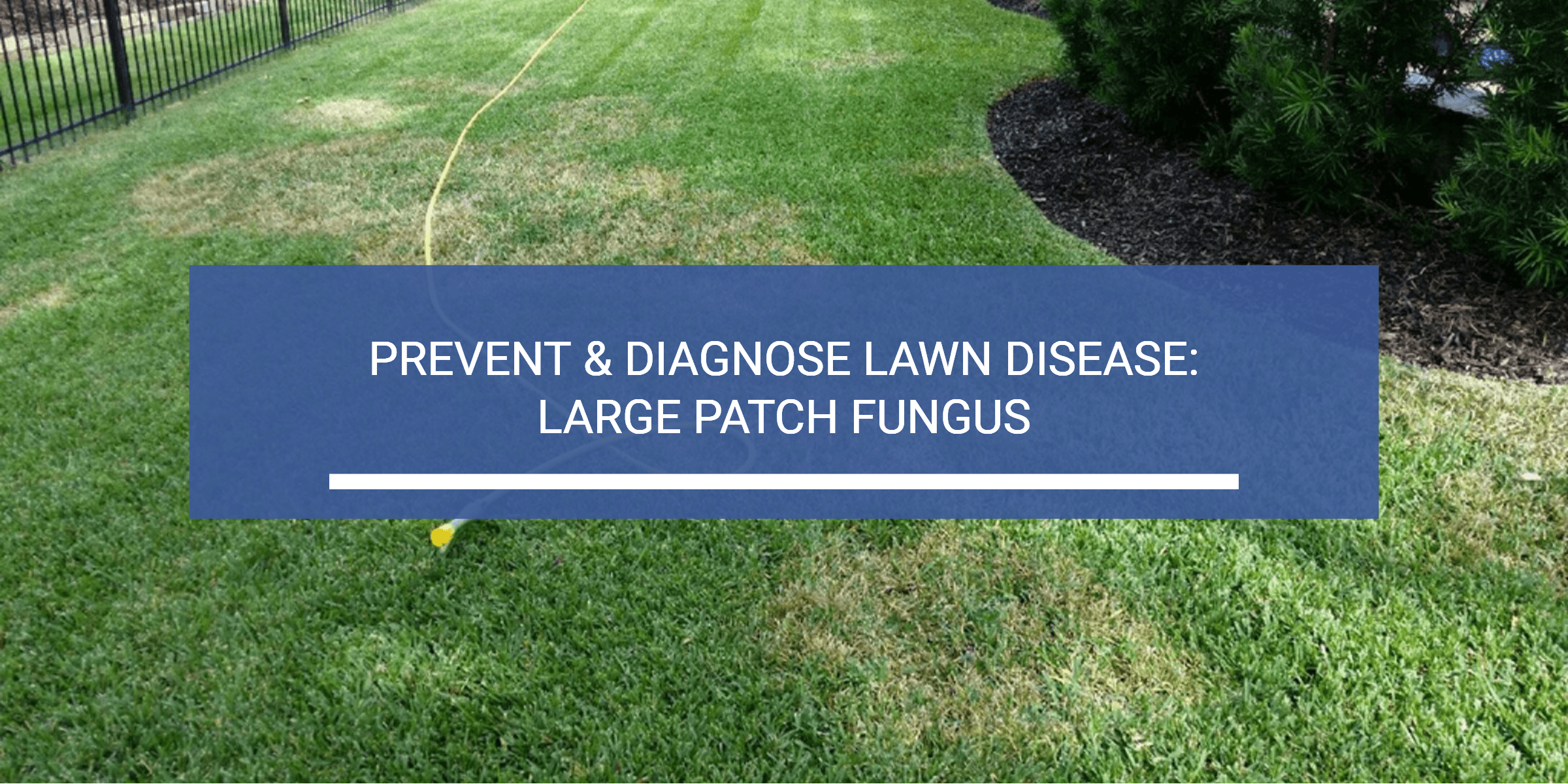
20 Dec Prevent & Diagnose Lawn Disease
Large Patch Fungus
Welcome to a special feature, from our Lawn and Ornamental Field Operations Management Team of Roger Chatleain and Rich Price: seasonal issues that affect lawns and landscaping.
Once the cooler weather hits and the average temps dip below 80 degrees, the change in temperature can play havoc with your lawn. One of the more common problems we see is the Large Patch Fungus, aka Rhizoctonia Solani.
This fungus affects all warm-season turfgrasses, which covers pretty much every type of grass we have in the area, but St. Augustine and Zoysia are more susceptible than others. And, while it can occur at other times, the Large Patch Fungus is most common in November through May.
If you notice a circular patch of yellowing grass, about a foot in diameter, you should pay attention. Typically, the grass will turn orange, brown or straw-colored as it declines and the fungus spreads out. It’s not uncommon to see healthy grass in the middle of rings of yellow or brown grass. Turf at the outer margin of a patch may appear dark and wilted.
While this is a fairly common fungal disease, it can be prevented by watering properly and avoiding nitrogen-rich fertilizers when the disease is present. Adjust your watering schedule to water only when necessary – which is not that often during the winter months – and only when dew is already on the grass, between 2:00 and 8:00 am. Also, just like a virus, the disease can be spread by mechanical practices such as mowing, so mow any diseased areas last.
If the fungus continues to spread, you’ll want to call a licensed and certified professional who can diagnose the disease and prescribe the appropriate treatment. Chemical controls can help prevent and suppress this disease.
Grass is an ecosystem in balance. When temperatures change, the grass goes dormant and is more susceptible to infection. Fortunately, while common, Large Patch Fungus can be prevented with proper care, and treated if it gets out of control.




Sorry, the comment form is closed at this time.